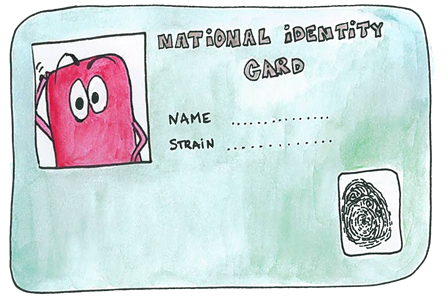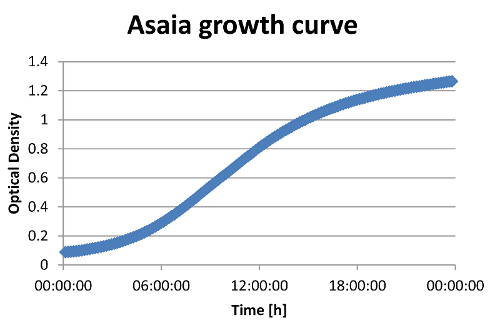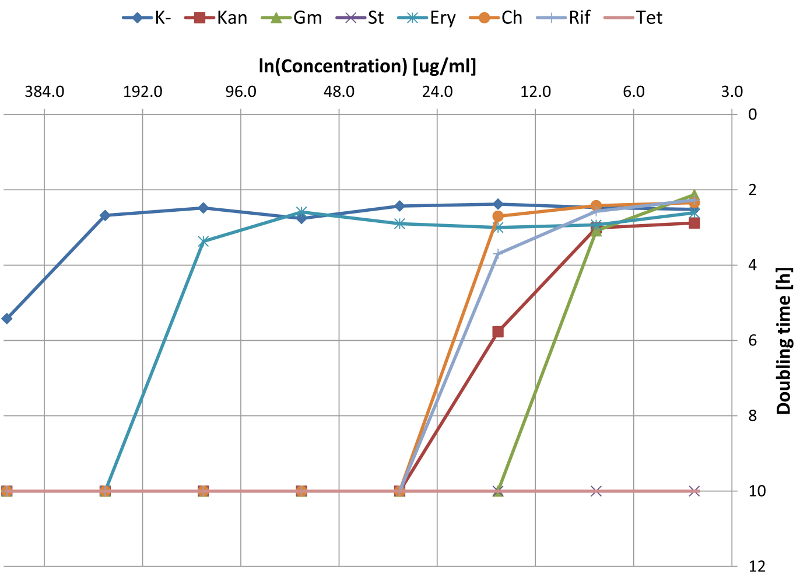Team:EPF Lausanne/Project asaia
From 2010.igem.org
(→Asaia: A new chassis to fight mosquito-borne diseases) |
(→Asaia: A new chassis to fight mosquito-borne diseases) |
||
| Line 28: | Line 28: | ||
=Asaia: A new chassis to fight mosquito-borne diseases= | =Asaia: A new chassis to fight mosquito-borne diseases= | ||
| - | Asaia is a pink bacteria collected from tropical flowers in Thailand and Indonesia [1]. It has been proven to naturally live in the mosquito's intestinal tract and to have a hight rate of transmission between mosquitos, both horizontally (from one mosquito to another) and vertically (from parent to offspring)[2]. | + | Asaia is a pink bacteria collected from tropical flowers in Thailand and Indonesia [1]. It has been proven to naturally live in the mosquito's intestinal tract and to have a hight rate of transmission between mosquitos, both horizontally (from one mosquito to another) and vertically (from parent to offspring)[2]. It also appears to be specific to mosquitos, and will therefore not spread to others insects. |
| - | + | These properties make it a very good candidate for our project, which consists in blocking the cycle of Malaria, impeding it to infect other people. To assess if asaia is actually a good organism to work on, our team at EPFL decided to study and characterize it: we worked on the strain SF2.1(Gfp) [3] and it appears it is relatively easy to manipulate. Our team hence provides iGEM with a new chassis, and amongst other things protocols for future teams that want to keep working on this very promising organism. | |
| - | + | ||
| - | + | ||
We believe it could be a really good instrument in the fight against malaria and other mosquito-borne diseases. | We believe it could be a really good instrument in the fight against malaria and other mosquito-borne diseases. | ||
Revision as of 20:22, 25 October 2010


Contents |
Asaia: A new chassis to fight mosquito-borne diseases
Asaia is a pink bacteria collected from tropical flowers in Thailand and Indonesia [1]. It has been proven to naturally live in the mosquito's intestinal tract and to have a hight rate of transmission between mosquitos, both horizontally (from one mosquito to another) and vertically (from parent to offspring)[2]. It also appears to be specific to mosquitos, and will therefore not spread to others insects.
These properties make it a very good candidate for our project, which consists in blocking the cycle of Malaria, impeding it to infect other people. To assess if asaia is actually a good organism to work on, our team at EPFL decided to study and characterize it: we worked on the strain SF2.1(Gfp) [3] and it appears it is relatively easy to manipulate. Our team hence provides iGEM with a new chassis, and amongst other things protocols for future teams that want to keep working on this very promising organism.
We believe it could be a really good instrument in the fight against malaria and other mosquito-borne diseases.
In this page we want to summarize the main properties coming out from our experiments.
References
- [http://ijs.sgmjournals.org/cgi/reprint/51/2/559.pdf 1. Kazushige Katsura, Asaia siamensis sp. nov., an acetic acid bacterium in the α-Proteobacteria,International Journal of Systematic and Evolutionary Microbiology (2001)]
- [http://www.pnas.org/content/104/21/9047.long#sec-7. Guido Favia, Bacteria of the genus Asaia stably associate with Anopheles stephensi, an Asian malarial mosquito vector ]
Doubling Time
We measured the growth curve of Asaia at different pH (pH2-pH7) and at 30°C and 37°C to figure out the optimal growth conditions. We found that the optimal Temperature is 30°C, and the optimal pH is 5. At this conditions we measured a doubling time of 2h40min.
Antibiotic resistance
We characterized Asaia's properties against various antibiotics. We had noticed previously that Asaia is naturally resistant to Ampicillin (Amp) and Chloroamphenicol (Cm) to the standard concentrations for E. coli. We tested the behaviour of Asaia to 7 others antibiotic like Tetracyclin (Tet) and Kanamycin (Kan) at various concentrations.
Compatibility with E. coli
We noticed that the Origin of replication of Asaia is compatible with E. coli, but the opposite is not true. The origin of replication of E. coli isn't compatible with Asaia. Thus, we had to add Asaia's origin of replication to all our parts so they would function in both Asaia and E. coli

 "
"




















